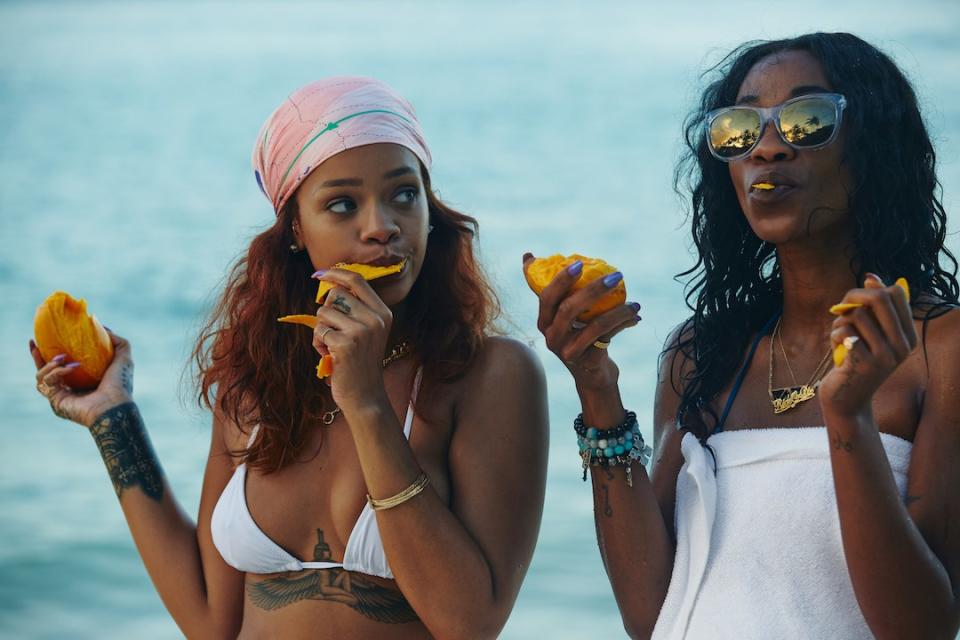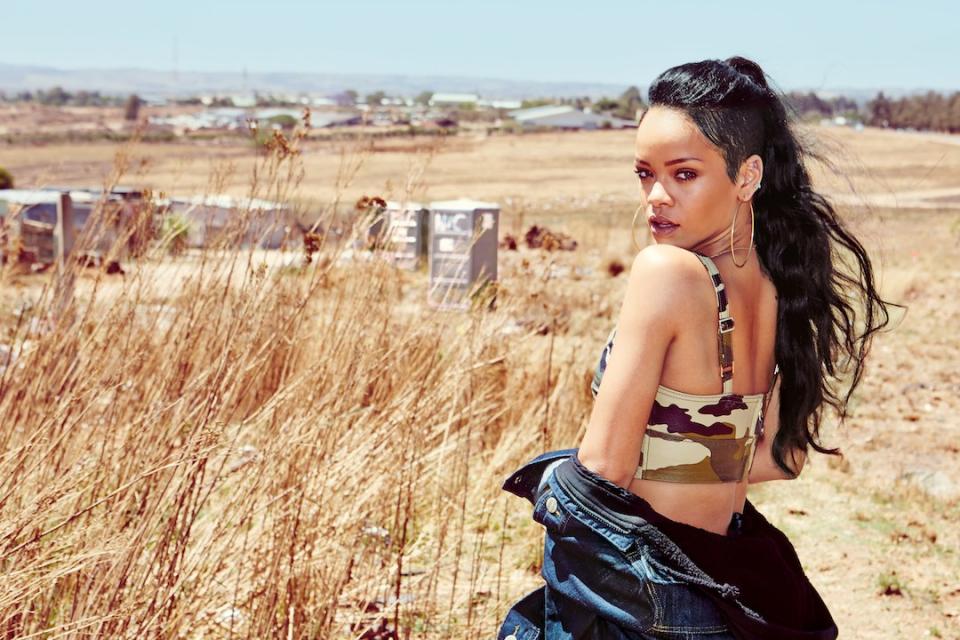The Rihanna Photo Book Wants You to Believe That She Has Always Been Effortlessly Cool
Even casual observers know that Rihanna has perfected the tricky art of being a public figure. She is neither inaccessible in the fortressed style of Beyoncé, nor overly available like Lizzo and other artists who came up through social media. She’s found the right balance of being engaged while somehow remaining mostly gaffe-proof. (Two recent missteps—celebrating alleged grifter Shaun King with an award and hiring documented abuser Fabolous to perform at the Savage X Fenty fashion show—appear to have been overlooked by most of the public.) Her persona hinges on the supremely sellable equilibrium of relatable and aspirational, and the construction of a brand so strong that there is the perception of transparency, even when she’s gone quiet.
Because of that unique juxtaposition of qualities, I’m not quite sure what to make of her most recent project, the photo book Rihanna. (To call it a coffee table book would require a reimagining of coffee tables.) The 15-pound behemoth strikes me as the first time in recent years that Rihanna’s motivation isn’t readily evident. Conceptualized over a five-year period and comprised mostly of pictures taken by her ever-present photographer Dennis Leupold, the project measures in at more than 500 pages, over 1,000 previously unseen photographs, several gatefolds, and even a poster. The material was culled from an archive of several hundred thousand photos, likely a good chunk of her waking life during those years. The book retails for $150, with several special editions pushing into the thousands of dollars. In classic Rihanna style, one version—featuring a steel tabletop bookstand—gets straight to the point with its title: This Sh*t Is Heavy.
It’s an undeniably beautiful art book: loosely chronological, charting Rihanna’s recent growth in images. Early on, it’s mostly music-related—shots of her concerts, video shoots, rare days off between tour dates. By the end, she transforms into the unbothered icon we know today. Along the way, there are hazy portraits, conquered stages, candid backstage images, casual poses turned into crisp editorials. In one standout photo, Rihanna sits in the backseat of a car in Paris, visibly alarmed by the chaos towards the edges of the frame. In another, she dives into a slice of mango, looking sweetly at her best friend, Melissa Forde, almost oblivious to the camera; in the background is a calm blue sea, a constant motif in the life of an island child. There are birthdays, New Year’s Eve parties, friends, family, weed, champagne. Nothing is dark, nothing is embarrassing, nothing is unflattering.

Even at its most candid, Rihanna isn’t exactly a “visual autobiography,” as her team has called it. The book is more of a celebratory visual addendum. It’s Instagram externalized, a curated photo-grid made tangible. Most of the photos, though previously unpublished, are familiar. Even the casual Rihanna follower might remember some of the looks chronicled: the year she made a mullet look cool, the night she wore that Swarovski-crystal-encrusted see-through dress, the time she showed up to the Met Gala in full bloom. Rihanna offers no alternate timeline, simply brief access to moments just before and after the ones we’ve already seen.
I was hoping for something that complicated the understanding of her, rather than merely bolstering it. Think, for example, of Kim Kardashian’s Selfish, the 2015 photo book that turned hundreds of selfies into something of an unlikely story. The notoriously vain Kardashian compiled self-portraits, many of them unflattering, from her vast personal archive, accompanying them with earnest, detailed captions that range from vapid to brilliant. Selfish was significantly less successful from an aesthetic point of view, but ultimately more instructive as a celebrity narrative.

Instead, Rihanna may have more in common with The New Black Vanguard: Photography Between Art and Fashion, a wonderful new book chronicling this vibrant moment in black fashion photography. The collection, edited by the curator and critic Antwaun Sargent, charts a recent transformation in black commercialized representation, led by photographers like Tyler Mitchell and Campbell Addy. Taken as a fashion project rather than a personal one, Rihanna makes a bit more sense. It was, after all, through her style and casual upending of the fashion and beauty spaces that she went from singer to pop star.
As Rihanna has built up her Fenty cosmetics and lingerie lines into industry-disrupting ventures, she has also become their most compelling model. With every image now doubling as promo (whether directly or indirectly), Rihanna has refined and re-defined her visual language. Her references have become more evocative, and she has appeared more relaxed, even as the stakes have risen. It’s often said that influencers and reality-TV stars like the Kardashians earn a living by being themselves. But those selves, we now understand, are carefully constructed. Rihanna seems to insist that hers is natural and uncontrived, even as it is clearly creative-directed. The book closes with a series of crystalline photos that evoke peace. Rihanna basks in the ocean, in an infinity pool, in front of a limitless horizon. Maybe, I thought as I reached the end, Rihanna has nothing left to say. Maybe now she just wants to float.
Originally Appeared on Pitchfork

